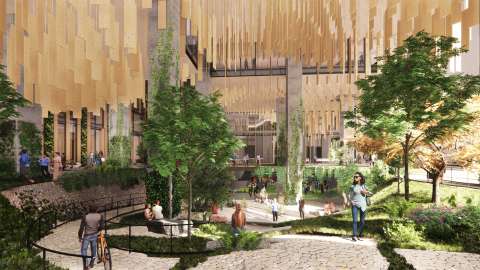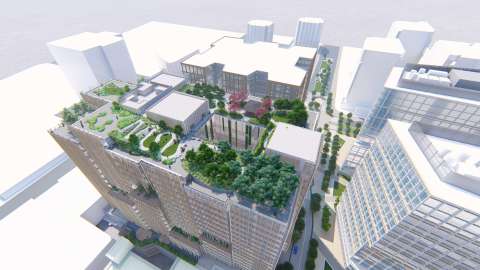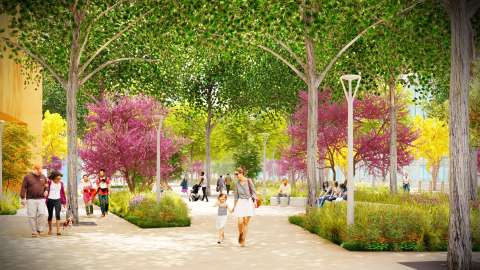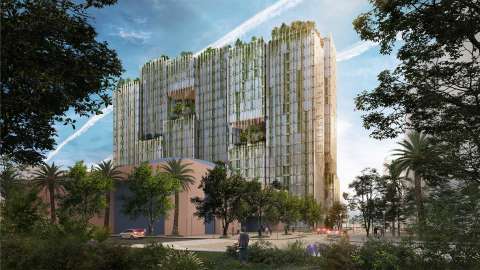
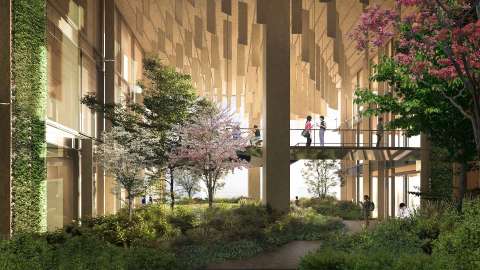
An Integration of Urban Landscape + Building as One
As the city rejuvenates its downtown, the urban forest and ecology is a guiding idea in making equitable and inviting public space, but one that must contend with an increasingly warmer and more volatile climate. Park Habitat aspires to merge the city’s agricultural and horticultural traditions with urban ecology, and ‘climate-positive’ planting to sequester carbon and cool the city. The Park Habitat planting strategy carries forward native species of the Valley of Hearts Delight that will adapt to changing climate. These strategies yield an immersive, diverse, and adaptive landscape — a street that feels like a garden, and a building that is characterized by the dominance of its planting and park-like settings. The Park Avenue Design Guidelines provide a design concept for the improvements on the site level along Park Avenue. The landscape design of Park Habitat will be cohesive with the broader landscape approach for Park Avenue and diverge radically on property with an immersive, public sunken garden, planted terraces and roof top park. Park Habitat points to the future of extensive use of plants integrated with the building for manifold benefits, while it recalls San Jose’s arboreal and horticultural legacies to tell the story of the city.
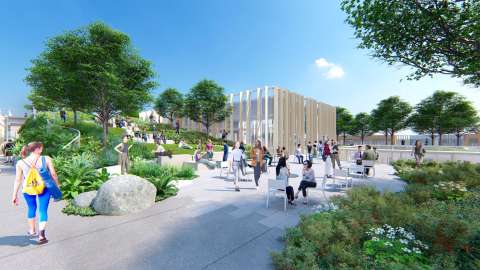
Immersive landscapes permeate the building to provide places for respite, social interaction, and events. The character of open spaces complements the rich architectural palette, using locally and sustainably sourced materials, and employing sculpted elements of concrete and stone that support both the diverse programming and a sense of serenity provided by a California native landscape.

